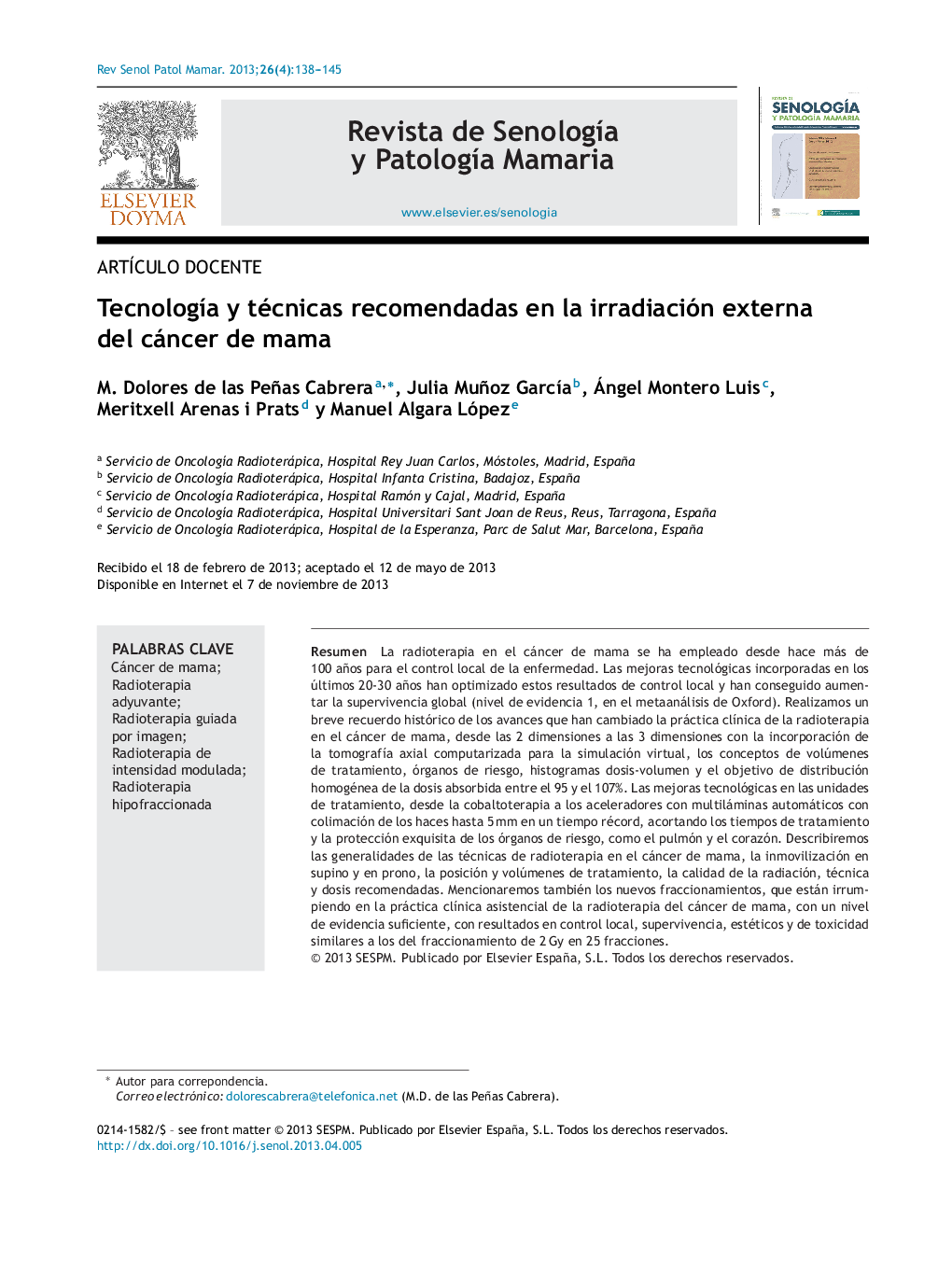| Article ID | Journal | Published Year | Pages | File Type |
|---|---|---|---|---|
| 3973839 | Revista de Senología y Patología Mamaria | 2013 | 8 Pages |
Abstract
Radiation therapy in breast cancer has been used for more than a century for local disease control. Improved technology in the last 20-30 years has maximized outcomes not only in achieving local control but also in increasing overall survival (level 1 evidence in an Oxford meta-analysis). We present a brief historical review of all the technical and scientific advances that have changed clinical practice in breast cancer radiotherapy. These include the switch from 2-dimensional to 3-dimensional technology with the use of computed tomography for virtual simulation, the new concepts of treatment volumes, organs at risk and dose-volume histograms, and the objective of a homogeneous distribution of the absorbed dose of between 95% and 107%. Technological advances in treatment units, from cobalt therapy to accelerators with MLC leaves with beam collimation of up to 5Â mm in record time have shortened treatment times and provide exquisite protection to at-risk organs, such as the heart or lung. We describe the general features of radiation therapy techniques in breast cancer, including immobilization in supine and prone positions, the position and volumes of treatment, the quality of radiation, the technique, and recommended doses. We also mention the new dose fractions that are breaking into the clinical practice of breast cancer radiotherapy, with a considerable level of evidence showing good results in terms of local control, survival rates, and esthetic outcomes, as well as toxic effects very similar to those achieved with the standard dose of 50Â Gy in 25 fractions of 2Â Gy.
Keywords
Related Topics
Health Sciences
Medicine and Dentistry
Obstetrics, Gynecology and Women's Health
Authors
M. Dolores de las Peñas Cabrera, Julia Muñoz GarcÃa, Ángel Montero Luis, Meritxell Arenas i Prats, Manuel Algara López,
